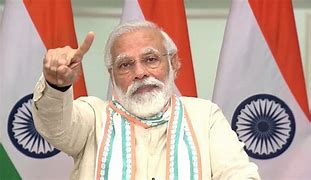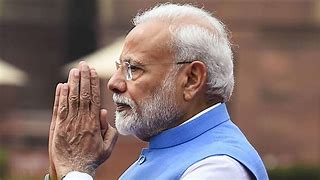Top News
Four killed as another big quake jolts Nepal

Kathmandu: A major earthquake on Tuesday jolted Nepal, striking fear among the people and causing panic in a country which was barely recovering from the devastating April 25 temblor.
Cracked buildings collapsed in a heap of debris and landslides cut off roads as an earthquake measuring 7.3 on the Richter scale hit Nepal, with its epicentre not far from Mount Everest — the world’s highest peak at 8,848 m.
Terrified people ran out of homes and offices as the buildings began to shake violently due to the earthquake. They ran to open space and parks here.
“It was frightening,” said an eyewitness who clutched her daughter. “It felt worse than last time,” she added
BBC said four people were killed in Chautara Town, east of Kathmandu, where buildings also collapsed.
Six strong aftershocks followed in quick succession. Four of the aftershocks were in the epicentre Kodari while the strongest aftershock measured 6.3 on the Richter scale.
Indian Prime Minister Narendra Modi said he has directed authorities to be on alert for rescue and relief operations.
A tweet from the prime minister’s office said: “PM took stock of the situation following the fresh major earthquake felt in Nepal and parts of India, at a high-level meeting.”
India Meteorological Department chief L.S. Rathore said that aftershocks could well continue for a few more weeks and months.
The tremors were felt in India, particularly in capital Delhi, Lucknow, Jaipur, Amritsar, Kolkata and the northeastern city of Guwahati. Buildings also shook in faraway Kochi in Kerala.
In Delhi, people ran out as buildings began to shake. Metro services were brought to a halt.
Rohtash Sharma said in Delhi: “I was at a bank when I felt the earthquake. I immediately ran out along with others.”
“Oh…this time I felt that it lasted longer than the one that we had in April. We all rushed out of our houses,” said Rakesh Sharma, who lives on the fifth floor in a high-rise building in C-Scheme area of Jaipur in India’s Rajasthan state.
In Kathmandu, an eyewitness said that he saw a building fall.
Another witness told IANS that he saw debris falling on a taxi packed with people. The fate of the people in the taxi was not immediately known.
Onlookers were left dazed and distraught on seeing the buildings collapse with a roar, a replay of the April 25 quake horror.
There was no electricity in Kathmandu. Internet connectivity too snapped.
People desperate for news tried to get in touch through their mobile phones, but that too did not work. The mobile network was jammed.
In Kathmandu, people made a beeline for shops to stock on water and other essential commodities here.
Harried shopkeepers were seen trying to manage the surging crowds at their shops.
People feared a repeat of the April 25 earthquake which caused widespread devastation.
“It is really scary,” said a Kathmandu resident as he rushed to join the people at the local grocery shop.
Nepal’s National Assembly was in session when the earth began to shake, creating panic among the lawmakers. They quickly trooped out of the building, which was soon plunged into darkness.
Kathmandu airport was closed temporarily as the ATC staff hurried out of the tower.
Entertainment
Casino Days Reveal Internal Data on Most Popular Smartphones

International online casino Casino Days has published a report sharing their internal data on what types and brands of devices are used to play on the platform by users from the South Asian region.
Such aggregate data analyses allow the operator to optimise their website for the brands and models of devices people are actually using.
The insights gained through the research also help Casino Days tailor their services based on the better understanding of their clients and their needs.
Desktops and Tablets Lose the Battle vs Mobile
The primary data samples analysed by Casino Days reveal that mobile connections dominate the market in South Asia and are responsible for a whopping 96.6% of gaming sessions, while computers and tablets have negligible shares of 2.9% and 0.5% respectively.
The authors of the study point out that historically, playing online casino was exclusively done on computers, and attribute thе major shift to mobile that has unfolded over time to the wide spread of cheaper smartphones and mobile data plans in South Asia.
“Some of the reasons behind this massive difference in device type are affordability, technical advantages, as well as cheaper and more obtainable internet plans for mobiles than those for computers,” the researchers comment.
Xiaomi and Vivo Outperform Samsung, Apple Way Down in Rankings
Chinese brands Xiaomi and Vivo were used by 21.9% and 20.79% of Casino Days players from South Asia respectively, and together with the positioned in third place with a 18.1% share South Korean brand Samsung dominate the market among real money gamers in the region.
Cupertino, California-based Apple is way down in seventh with a user share of just 2.29%, overshadowed by Chinese brands Realme (11.43%), OPPO (11.23%), and OnePlus (4.07%).
Huawei is at the very bottom of the chart with a tiny share just below the single percent mark, trailing behind mobile devices by Motorola, Google, and Infinix.
The data on actual phone usage provided by Casino Days, even though limited to the gaming parts of the population of South Asia, paints a different picture from global statistics on smartphone shipments by vendors.
Apple and Samsung have been sharing the worldwide lead for over a decade, while current regional leader Xiaomi secured their third position globally just a couple of years ago.
Striking Android Dominance among South Asian Real Money Gaming Communities
The shifted market share patterns of the world’s top smartphone brands in South Asia observed by the Casino Days research paper reveal a striking dominance of Android devices at the expense of iOS-powered phones.
On the global level, Android enjoys a comfortable lead with a sizable 68.79% share which grows to nearly 79% when we look at the whole continent of Asia. The data on South Asian real money gaming communities suggests that Android’s dominance grows even higher and is north of the 90% mark.
Among the major factors behind these figures, the authors of the study point to the relative affordability of and greater availability of Android devices in the region, especially when manufactured locally in countries like India and Vietnam.
“And, with influencers and tech reviews putting emphasis on Android devices, the choice of mobile phone brand and OS becomes easy; Android has a much wider range of products and caters to the Asian online casino market in ways that Apple can’t due to technical limitations,” the researchers add.
The far better integration achieved by Google Pay compared to its counterpart Apple Pay has also played a crucial role in shaping the existing smartphone market trends.
Content provided by Adverloom

























